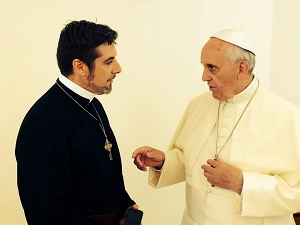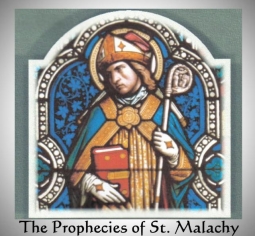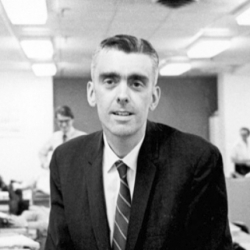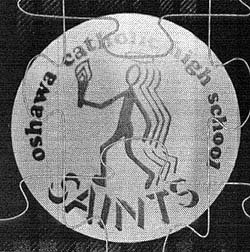“Remember who you are and whom you serve,” as Christianity Today has just reminded us.
Jeanette gave me a subscription to Christianity Today for Christmas this year. While I always try and find my way into Hull’s Family Bookstores when we’re in Winnipeg, where I buy the most recent issue available, my trips to the provincial capital are only occasional, and I have not previously been a subscriber to the magazine, although I have been reading free content online over the years.
This month, I can’t think of any publication more deserving of monetary support.
Kudos to Timothy Dalrymple, president and CEO of Christianity Today, and Mark Galli, outgoing editor in chief of Christianity Today. Since 1956 and its founding by the late Billy Graham, Christianity Today has been a trusted beacon. Part of its “Statement of Faith” proclaims, “When we have turned to God in penitent faith in the Lord Jesus Christ, we are accountable to God for living a life separated from sin and characterized by the fruit of the Spirit. It is our responsibility to contribute by word and deed to the universal spread of the Gospel.”
Nearly 200 evangelical leaders, however, are pushing back against Galli’s recent editorial that called for United States President Donald Trump to be removed from office, saying the piece “offensively” dismissed their support of the president.
Following Trump’s impeachment last week, Galli called Trump a “grossly immoral character.” The criticism was notable as evangelicals are a key constituency of Trump.
On Dec. 22, a number of prominent evangelical leaders affirmed their strong support of the president and slammed the magazine in a letter to Dalrymple: “Your editorial offensively questioned the spiritual integrity and Christian witness of tens-of-millions of believers who take seriously their civic and moral obligations,” the evangelical leaders wrote. “It not only targeted our President; it also targeted those of us who support him, and have supported you,” they added.
The signatories include Jerry Falwell Jr., the president of Liberty College; Tony Perkins, the president of the Family Research Council; Ralph Reed, the president of the Faith and Freedom Coalition; and Paula White Cain, Trump’s longtime spiritual adviser who recently joined the White House staff.
Former Republican Arkansas Governor Mike Huckabee, and former United States House of Representatives Republicans Michele Bachmann and Bob McEwen were also among those who signed the letter.
All that said, it would be a mistake simply to reduce this to a matter of caricature of those we disagree with. Jerry Falwell (as was his father) is too tempting a target. And while it may not be charitable to say so, in truth I have wondered more than once if Franklin Graham is up to being his father’s son. He’s too of-this-world political and too cozy with Trump and his band of cronies for my taste, yet I have great admiration for his work as head of Samaritan’s Purse and the 2014 Ebola crisis, particularly in Liberia in West Africa. Samaritan’s Purse was founded by Dr. Bob Pierce in 1970 as a nondenominational evangelical Christian organization to provide spiritual and physical aid to hurting people around the world. Samaritan’s Purse Canada was established in 1973.
In 2014 Médecins Sans Frontières, also known in English as Doctors Without Borders, the highly respected international humanitarian medical non-governmental organization, founded in Paris in 1971, stretched beyond their limits in Guinea and Sierra Leone in the midst of the deadliest Ebola viral hemorrhagic fever outbreak recorded in West Africa since the disease was discovered in 1976, asked Samaritan’s Purse to take over the management of ELWA (Eternal Love Winning Africa) Hospital – the main facility, founded in 1965 by the medical mission group Serving in Mission (SIM) USA, caring for all Ebola patients in Monrovia, Liberia.
It would be impossible, I think, for most of us to be unmoved by the steps Franklin Graham took to rescue Dr. Kent Brantly, 33, medical director at Samaritan’s Purse Ebola Consolidated Case Management Center in Monrovia, who had contracted Ebola, and who became the first patient ever medically evacuated and repatriated to the United States with a confirmed case of Ebola, to be treated at Emory University Hospital in Atlanta, largely due to Graham’s efforts.
Jeanette has taught me many things, but one of the earliest points she made with me when I was writing scathing editorials, was that when it comes to individuals – real flesh-and-blood people – it is often both difficult and dangerous to assign motive and infer intention into hearts we cannot know, and truth be told, that includes men like Jerry Falwell and Franklin Graham, as painful as that is to admit at times.
Terry Mattingly, who describes himself as a “prodigal Texan,” and is a parishioner at St. Anne’s Orthodox Church in Oak Ridge, Tennessee, elucidates the complexities at play well in his post, ” What’s the one thing journalists need to learn from the Christianity Today firestorm?,” which was published yesterday in GetReligion.org, an independent website, which he founded and edits, and which takes as its mission wrestling with issues of religion-beat coverage, as it critiques the mainstream media’s coverage of religion news. The post can be read at: https://www.getreligion.org/getreligion/2019/12/23/whats-the-one-thing-journalists-need-to-learn-from-the-christianity-today-firestorm
We desperately need more of the likes of John McCandlish Phillips, who died in 2013 at the age of 85, and lived in relative obscurity in New York City, where he was affiliated with the Manhattan-based New Testament Missionary Fellowship, a small evangelical Pentecostal congregation of perhaps three-dozen members; it is a church he helped co-found in 1962.
From time to time, as part of their evangelization effort, Phillips could be heard proselytizing for Christianity in Central Park or the Columbia University campus, near his home. Phillips also spent part of his time managing Thomas E. Lowe, Ltd., a small religious publishing house that buys remaindered religious books and reprints a few others, selling them to Christian bookstores.
John McCandlish Phillips, with his plain-sounding declarative writing voice, also happens to have been perhaps the single best writer who ever tapped the typewriter keys as a reporter at the New York Times. That is until he retired after 21 years at the age of 46 in December 1973. He had joined the paper as a night copy boy in 1952. You can read more about him here at: https://soundingsjohnbarker.wordpress.com/2014/09/05/john-mccandlish-phillips-the-best-reporter-of-his-generation-walked-away-for-god-at-the-top-of-his-game/
As for Mattingly, his father was a Southern Baptist pastor and his mother a language arts teacher. He double-majored in journalism and history at Baylor University and then earned an M.A. at Baylor in Church-State Studies and an M.S. in communications at the University of Illinois in Urbana-Champaign.
He worked as a reporter and religion columnist at the Rocky Mountain News in Denver and the Charlotte Observer and the Charlotte News. In 1991, Mattingly began teaching at Denver Seminary and has lectured at Gordon-Conwell Theological Seminary in South Hamilton, Massachusetts.
While we should tread with caution in judging the intentions of others, as Mattingly reminds of us, we are also called to bear witness through the example of our own lives. While it may only be an errantly attributed aphorism, Abraham Lincoln’s “It is a sin to remain silent when it is your duty to protest” speaks a powerful truth.
More and more, the world is in need of Christian witness such as that from Christianity Today, evangelicalism’s flagship magazine, as an earlier era was moved by the witness of German theologian and pastor Martin Niemöller’s, whose prophetic words are inscribed on a wall in the United States Holocaust Memorial Museum’s Hall of Witness, a memorial space on the ground floor:
“First they came for the Socialists, and I did not speak out
“Because I was not a Socialist.
“Then they came for the Trade Unionists, and I did not speak out
“Because I was not a Trade Unionist.
“Then they came for the Jews, and I did not speak out
“Because I was not a Jew.
“Then they came for me-and there was no one left to speak for me.”
Galli’s Dec. 19 editorial, “Trump Should Be Removed from Office,” and Dalrymple’s Dec. 22 update, “The Flag in the Whirlwind: An Update from CT’s President,” are both linked to below:
https://www.christianitytoday.com/ct/2019/december-web-only/trump-should-be-removed-from-office.html
As I write these words, I am given to ponder the three Bible verses below:
Joshua 24:14-15:
“Now therefore fear the Lord, and serve him in sincerity and in truth: and put away the gods which your fathers served on the other side of the flood, and in Egypt; and serve ye the Lord.
“And if it seem evil unto you to serve the Lord, choose you this day whom ye will serve; whether the gods which your fathers served that were on the other side of the flood, or the gods of the Amorites, in whose land ye dwell: but as for me and my house, we will serve the Lord.”
Micah 6:8
“He has shown you, O man, what is good;
And what does the Lord require of you
But to do justly,
To love [a]mercy,
And to walk humbly with your God?”
Amos 5:24
“But let justice run down like water,
And righteousness like a mighty stream.”
You can also follow me on Twitter at: https://twitter.com/jwbarker22



















